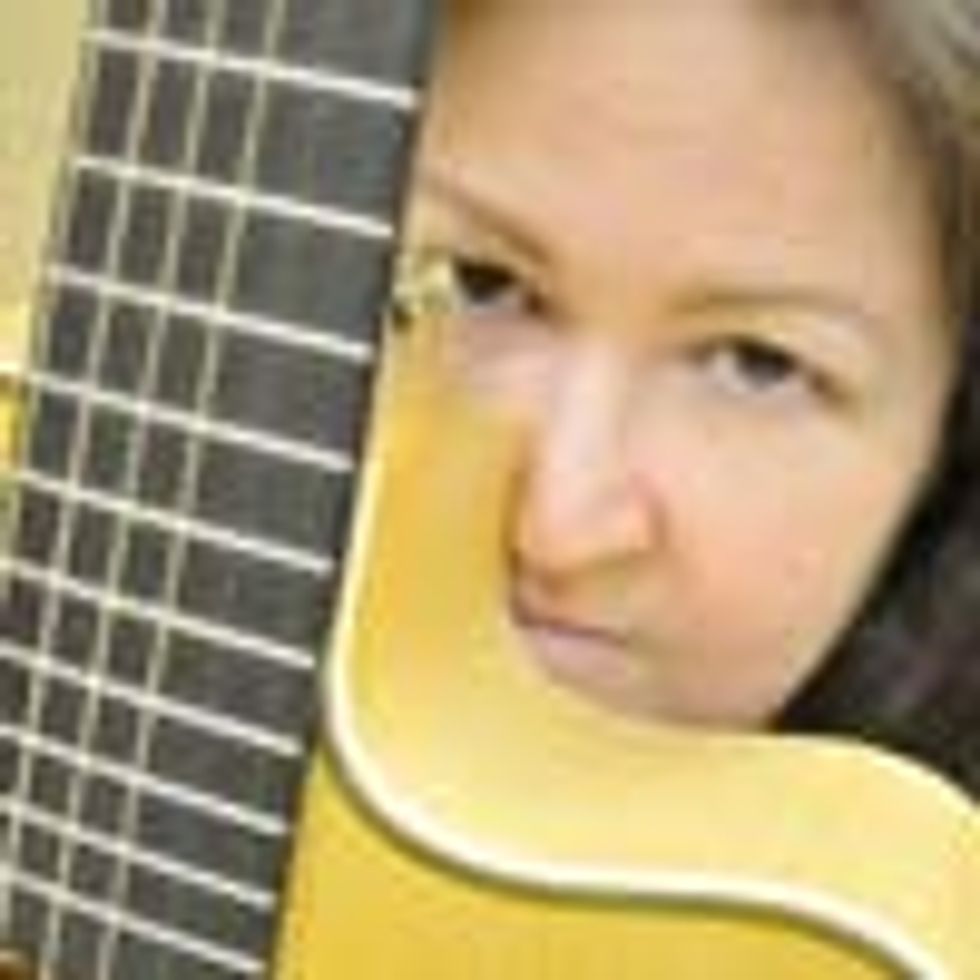Gayla Drake Paul discusses chord theory, the importance of a key center, scales, and the fretboard implant procedure she''s working on with a student.
Last month, I opened what I feared would be a can of worms that ended up sparking some really good discussions about the art of teaching guitar. I was only slightly surprised by how many of my fellow instructors are so frequently frustrated by what passes for teaching when it comes to guitar. I studied classical violin for 10 years, so I know what a rigorous program is. I learned technique and repertoire until I wanted to strangle Antonio Vivaldi with my bare hands, and I had very little fun. I'm grateful for that training though, because I still carry a fiddle fretboard around in my head all the time. I can hear a recording of somebody playing fiddle and I can picture in my head exactly what they're doing. I used that facility to great advantage as the fiddle player in a traditional Irish band—practically step-dancing up the learning curve of most of the tunes we played.
One of my students, Thomas, decided he wanted to get the “fretboard implant” early this summer. I don't know how quickly all that knowledge can be crammed in there, but we're giving it a shot over three months. So here is a crash course on the crash course I'm creating for him, and I hope you'll find it useful.
Brain Upgrade
The first thing I am doing is making damn sure he knows what a key center is and how it functions. Every key has three major chords, three minor chords, and one diminished chord. The pattern, no matter what key you are in, goes major, minor, minor, major (subdominant), major (dominant), minor, diminished. If you are playing these chords on a piano, you see that two notes out of each chord carry over every-other chord, which is why Am and C are relative. The C chord contains C, E, and G, while the Am chord contains A, C, and E. When you play a C chord (C-E-G) and put an A on the bottom, you get an Am7 (A-C-E-G)—likewise with G and Em, D and Bm, A and F#m, and every other major-minor relative pair in the entire musical spectrum. It doesn't matter what key you are in because those relationships are exactly the same—every time—which is partly why we talk about chord numbers instead of chord names. We say, “Go to the 6-chord here,” almost as often as we say, “That's an Em,” because the numbers are constant.
The next order of business is to make sure Thomas knows how to navigate in a key center. That means drilling C-Dm-Em-F-G7-Am-Bdim and G-Am-Bm-C-D7-Em-F#dim and D-Em-F#m-G-A7-Bm-C#dim and so on until they become completely automatic. I have chosen to kill two birds with one stone. I put together worksheets showing every way to play each diatonic chord in a key center, in key center order. So for the key of C, for example, we start with the “open” chords, even though you have to barre the Bm chord, and then we move to the barre chord positions, all the way up to the twelfth fret. It's all laid out around the familiar I-IV-V boxes, because that's how rock 'n' roll works.
After that, we add in (gag, shudder) scales. Yes, dreaded though they are, they're useful and important, and if you're going for a fretboard implant, necessary. Every place a scale can be played on the fretboard, we're playing them. And once those are automatic, we'll mix 'em up. Because once you learn one scale, the shape doesn't change ever again on the fretboard. You can play that same exact pattern two frets higher or two frets lower, and you've got it.
Can We Please Have Some Actual Fun Now?
The fun part is when Thomas says, “I want to learn this John Mayer song,” and we sit down with the CD and figure it out, chord by chord. Then we go to YouTube to see if some guy with too much time on his hands has figured out the riffs and guitar solos (always nice when somebody has already gone to all the trouble), and start putting all that together. Now it’s time to look at the complete song. What key is it in? Does it start on the 1-chord, the 6-chord or something else? Where does he play it straight and where, how and why does he break the rules?
Yes, once again, the current generation of guitar players is being a bad influence on the upcoming generation with rebellious rule-breaking ways. You'll have fun if you do it right, but if you do it wrong the right way? Oh, mama. Look out. Breaking the rules when you don't know what you're doing is fine, but if you actually know the rules, your rebellion might lead you into entirely different directions, even if you break the same rule in the same way.
Knowing what to do with yourself after you've broken a rule is what separates the tinkers from the thinkers, those who play at it from those who really know how to play. Let's teach 'em that.
 Gayla Drake Paul is a guitarist, songwriter and writer, working as a soloist and with the Gayla Drake Paul Trio. Her CD, How Can I Keep From Singing, is in the Ten Essential CDs for Acoustic Guitarists at digitaldreamdoor.com. Her new CD, Trio Plus Three: The Luckiest Woman, can be purchased at CDBaby.com.
Gayla Drake Paul is a guitarist, songwriter and writer, working as a soloist and with the Gayla Drake Paul Trio. Her CD, How Can I Keep From Singing, is in the Ten Essential CDs for Acoustic Guitarists at digitaldreamdoor.com. Her new CD, Trio Plus Three: The Luckiest Woman, can be purchased at CDBaby.com.
